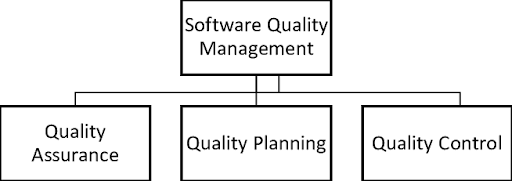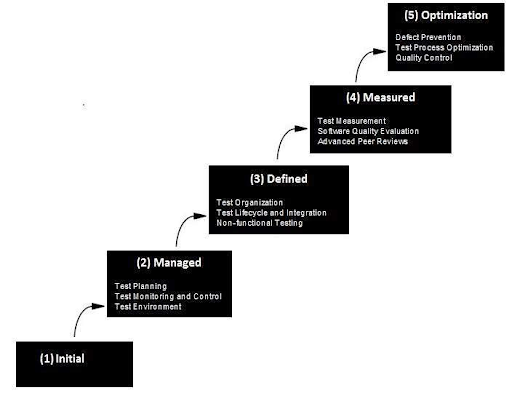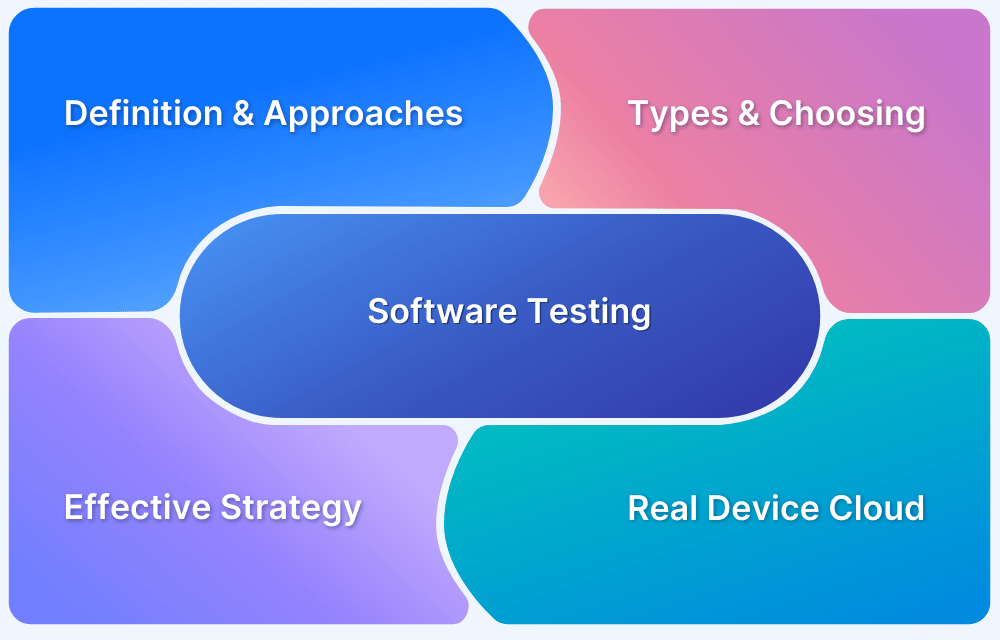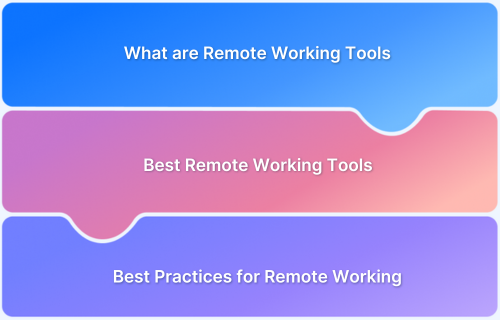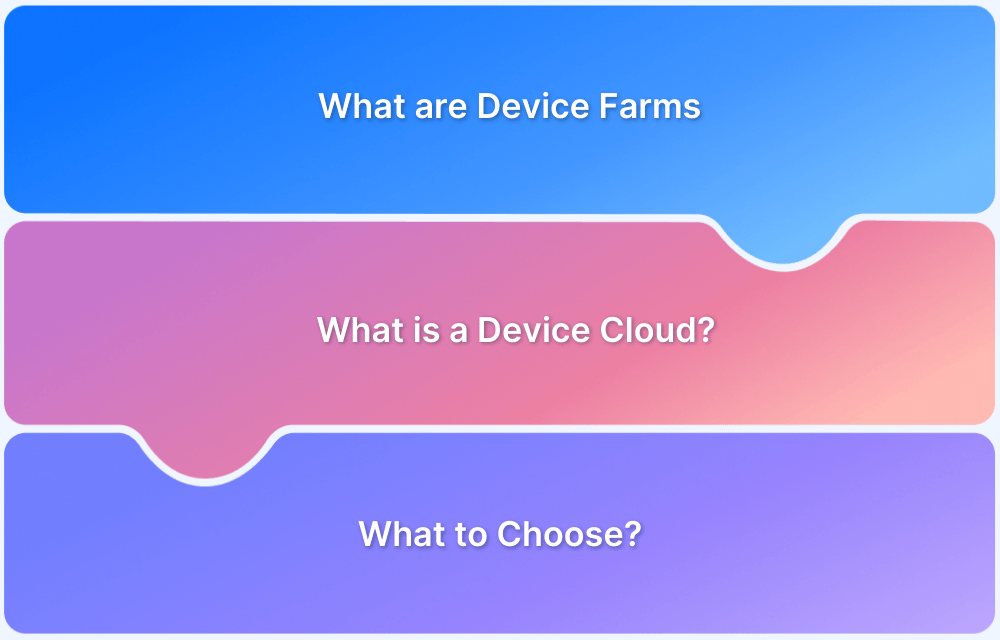Low-quality software not only leads to an inadequate user adoption rate but puts the company’s reputation at stake and increases software production costs.
Overview
Software Quality Management (SQM) ensures that software meets predefined quality standards, user expectations, and regulatory requirements. It involves systematic processes, methodologies, and tools to manage, monitor, and improve software quality throughout the development lifecycle.
Key Aspects of Software Quality
- Portability: The ability of software to function across different environments, platforms, or devices with minimal modifications.
- Usability: Ensures the software is user-friendly, intuitive, and easy to navigate for end users.
- Maintainability: The ease with which software can be updated, modified, or debugged without affecting overall functionality.
- Reliability: The software’s ability to perform consistently under different conditions without failures.
- Efficiency: Optimized performance with minimal resource consumption, ensuring speed and responsiveness.
Benefits of Software Quality Management
- Customer Satisfaction: High-quality software enhances user experience, increasing trust and satisfaction.
- Reduced Costs: Early defect detection and efficient quality management minimize rework and maintenance expenses.
- Enhanced Productivity: Streamlined development processes and fewer defects allow teams to focus on innovation.
- Increased Reliability: Ensures software stability, reducing downtime and operational disruptions.
- Improved Efficiency: Well-optimized software results in faster execution, better resource utilization, and smooth performance.
This article covers all about software quality management, including key activities, QA vs. QC, importance, benefits, assessment, best practices, and challenges in managing software quality.
What is Software Quality Management?
According to ISO 8402-1986, software quality is defined as “the totality of characteristics and features of a product or service that determine its ability to meet stated or implied needs.”
Simply put, Software Quality Management (SQM) is a structured approach to ensuring that software meets defined standards, functions as intended, and delivers a seamless user experience. It involves setting quality goals, monitoring development processes, and implementing corrective measures to prevent defects.
Quality can sometimes be difficult to define, but it is always evident when present. An effective Software Quality Management process is essential to ensure a high-quality final product and well-structured development processes. SQM ensures compliance with requirement specifications and relevant national and international standards, such as ANSI, IEEE, and ISO.
Read More: How to set goals for Software Quality
Aspects of Software Quality
Software quality is assessed on the basis on several key aspects that determine its functionality, performance, and adaptability.
- Portability: The ability of software to run across different platforms, operating systems, or environments with minimal modifications.
- Usability: How easy, intuitive, and user-friendly the software is for end users. A well-designed interface enhances the overall experience.
- Reusability: The capability of software components or code to be reused in different projects or scenarios, improving efficiency and reducing development time.
- Correctness: Ensures that the software functions as intended and produces accurate, expected results without errors.
- Maintainability: The ease with which the software can be updated, modified, or debugged without affecting overall functionality.
- Reliability: The software’s ability to perform consistently without failures under different conditions.
- Efficiency: Optimized performance with minimal resource consumption, ensuring fast execution and smooth operation.
What are the different activities of Software Quality Management?
In general, SQM is said to be composed of the following activities:
- Quality Assurance (QA)
- Quality Planning (QP)
- Quality Control (QC)
Source researchgate
Quality Control (QC)
Often said to be the “tip of quality management”, this step is observed even when other aspects of SQM are overlooked. This component is more product-oriented and begins simultaneously with software development. QC includes manual as well as automated testing including phases like functionality, integration, usability, performance, and regression testing. The main goal of Software QC is to check if the software is compliant with the business requirements and prevent any major bugs from propping up once the software is launched into production.
Read More: How to set up QA processes from scratch
Quality Assurance (QA)
This is the process-oriented part of SQM and needs to be inducted as early as possible in the project planning stage. QA deals with questions like:
- What are the standards that the software should comply with?
- What are the responsibilities of the individual stakeholders in ensuring high-quality software?
- What are the optimal production processes that can help prevent defects from cropping up? How do you establish these optimal production processes?
The US National Institute of Standards and Technology have postulated that it is 6 times more expensive to fix a bug found during software testing than to optimize requirement gathering in a way that prevents them altogether. A Mature and well-structured QA process aims to prevent defects rather than identify them through testing.
Read More: Essential Metrics for the QA Process
Quality Planning (QP)
A QP is either focused on company-wide quality management practices or specific projects. At the project level, a Quality Plan formalizes the aspects of SQM like:
- Roles and Responsibilities of stakeholders wrt QA
- The Software Requirements specification and the standards it should comply with
- Relevant types of testing and test documentation.
- An approximation of the test schedule, costs, and resources required
- Testing KPIs or metrics, etc.
Read More: Calculating Test Automation ROI: A Guide
Now that the overview of Software Quality Management is complete, it is important to understand the need for optimizing the same.
How Does Software Quality Management Work?
Software Quality Management (SQM) follows a structured approach to ensure that software meets predefined standards, business requirements, and user expectations. It involves a combination of planning, monitoring, and continuous improvement.
- Defining Quality Objectives: Set clear quality goals based on project requirements, industry standards, and customer expectations.
- Requirements Analysis: Review and validate functional and non-functional requirements to align with business needs and technical feasibility.
- Quality Planning: Develop a roadmap for implementing quality practices, selecting tools, and defining testing strategies to achieve quality objectives.
- Risk Assessment: Identify potential risks that could impact software quality and implement mitigation strategies to minimize defects and failures.
- Quality Assurance (QA): Establish standardized processes, strategies, and best practices to prevent defects throughout the development lifecycle.
- Quality Control (QC): Conduct systematic testing, reviews, and inspections to identify and rectify defects before software deployment.
- Continuous Monitoring: Track software performance and quality metrics throughout development and after release to ensure consistent quality.
- Metrics and Measurement: Use quantifiable metrics, such as defect density, test coverage, and response time, to evaluate and improve software quality.
Difference Between QA (Quality Analysis) and QC (Quality Control)
Both QA and QC are required for the Quality Management of Software Development. They are closely coupled during Quality Management; however, they are different. Here are the core differences between QA and QC:
| Criteria | QA | QC |
|---|---|---|
| Objective | The primary objective of QA is to prevent defects | The objective of QC is to identify defects and deviations from quality standards in the developed software. |
| Process | It requires establishing and implementing quality standards, processes, and methodologies. | It involves activities aimed at detecting and eliminating defects before the software is released to the end users. |
| Focus | QA focuses on the entire software development lifecycle, including requirements gathering, design, development, testing, and deployment. | QC focuses primarily on the testing phase of software development. It involves activities such as test planning, test execution, defect identification, and defect tracking. |
| Timing | QA activities are performed throughout the software development lifecycle, starting from the early stages. | QC activities occur during the testing phase, typically after the development is complete or during the later stages of development. |
| Responsibility | It is a responsibility shared by the entire development team, including developers, testers, project managers, and stakeholders. | Quality Control is primarily the responsibility of the testing team. |
| Output | The output of QA is the establishment and implementation of quality standards, guidelines, and processes. It may include documentation, test plans, quality metrics, and process improvements. | The output of QC is the identification, logging, and tracking of defects. It includes defect reports, test results, and documentation related to testing activities. |
The Need for Software Quality Management
Software Quality Management is essential to enforce because of the following factors:
- Predictability: A high-quality software is considered predictable in its performance and outcomes. As quality suffers so do re-work and the risks of delivering a low-quality product. Delivering high-quality products on time not only reduces costs but increases stakeholder faith in the product and the company.
- Reputation: Any company is as good as its products. Mistakes leading to low-quality software can be costly, and a loss in re can cost more than just money.
- High employee morale: A confident workforce is a happy workforce. Inferior quality products lead to re-work, complaints, and loss of reputation. This in turn leads to a loss of morale and hampers efficiency and performance.
- Customer Satisfaction: High-quality products always ensure customer satisfaction. Once a product meets the user requirements, the customer has no cause for complaint. Errors in the software development process cause patches and corrective versions, which prevent customers from pre-booking the product, not to mention low ratings.
Read More: How to find Bugs in Software?
Advantages of Quality Management in Software Development
Here are some of the key benefits of implementing quality management practices:
- Customer Satisfaction: Quality management focuses on meeting customer requirements and delivering software that meets or exceeds their expectations. By ensuring high-quality software, you enhance customer satisfaction, build trust, and increase customer retention.
- Reduced Costs: Investing in quality management practices can lead to cost savings in the long run. By identifying and addressing defects early in the development cycle, you prevent costly rework, minimize production issues, and reduce the need for extensive customer support or post-release maintenance.
- Improved Efficiency: Quality management practices, such as process standardization, automation, and continuous improvement, can enhance the efficiency of software development processes. By streamlining workflows, reducing manual effort, and eliminating waste, you can optimize resource utilization and achieve higher productivity.
- Enhanced Productivity: A focus on quality improves team productivity by promoting collaboration, fostering clear communication, and providing guidelines and best practices. When everyone in the team understands and adheres to quality standards, it leads to smoother development cycles, reduced rework, and increased overall efficiency.
- Early Issue Detection: Quality management emphasizes proactive defect detection and prevention rather than relying solely on testing at the end of the development cycle. By implementing quality control measures at every stage of the software development process, you can identify and address issues early, reducing the impact and cost of defects.
- Increased Reliability: Quality management practices ensure that software is reliable and performs as expected. Through thorough testing, validation, and verification, you can identify and rectify defects, ensuring that the software functions correctly, meets performance requirements, and delivers the intended value to users.
- Mitigated Risks: Quality management helps mitigate risks associated with software development and deployment. By conducting risk assessments, establishing quality assurance processes, and monitoring key performance indicators, you can identify potential risks early and take appropriate measures to minimize their impact on the project.
- Continuous Improvement: Quality management fosters a culture of continuous improvement within the development team and the organization as a whole. By regularly evaluating processes, gathering feedback, and implementing lessons learned, you can identify areas for improvement, drive innovation, and enhance overall software quality.
Gauging your current stage of Software Quality Management
An effective quality management process can be gauged by its maturity level. Before seeking to optimize the software quality management processes present, it is important to understand what stage the process currently sits at. There are several QA maturity models that can be used to do so.
The Testing Maturity Model (TMM) in Software Testing was developed in 1996 at the Illinois Institute of Technology. It lays out a set of levels through which a team or organization can move towards higher test maturity.
TMM in software testing can also be used to evaluate how mature the current test pipelines are. Once the current maturity has been measured, the TMM can also help decide targets to achieve when moving to higher maturity levels.
The Testing Maturity Model is based on the Capability Maturity Model (CMM), created earlier by the same Institute.
Source Tutorialspoint
- TMM Level 1 – Initial
This stage verifies that the software fulfills the users’ basic requirements. There is a lack of proper documentation, testing focuses on debugging and not proactive product quality. There is a general lack of the proper tools, skills, and resources to ensure high-level software quality.
- TMM Level 2 – Managed
The test process is now defined, structured, and established into a cohesive, executable strategy. Test plans, cases, and procedures are put in place with a focus on requirements and specifications. The focus at this stage is to explore techniques that evaluate software quality rather than just fix bugs.
- TMM Level 3 – Defined
At this level, the testing pipeline is integrated into the software development lifecycle. In each sprint, the sprint development phase is followed by testing. An independent QA team examines the software with predetermined requirements in mind. However, at this stage, testing objectives also take risk management into account. Test planning is done at the start of project ideation, as well as a comprehensive test strategy to handle expected risks.
- TMM Level 4 – Management and Measurement
At this stage, requirements and goals are measured for better management. Reviews and inspection activities are introduced into the lifecycle as a part of testing. Test Cases are documented and archived to be later utilized for regression testing. The main areas of focus now are Peer Reviews, Test Measurement & Quantification, and Software Quality Determination.
- TMM Level 5 – Optimized
This stage is only reached after implementing the key activities of the previous stages. At this stage, the testing process has become result-oriented, data-driven, and cost-effective. The software test techniques, methods, and metrics are all validated and iteratively improved. Testing tools are exhaustively used to record, analyze, and report results. The hallmarks of this level are Defect Prevention, Optimal Quality Control, and Test Process Optimization.
Read More: How to achieve high test maturity using TMM
Software Quality Management Tools
Software testing tools play a crucial role in ensuring the functionality, reliability, and performance of applications. Below are some of the best software testing tools:
- BrowserStack: A cloud-based platform for cross-browser and real-device testing, allowing teams to test web and mobile applications on real devices without the need for physical infrastructure.
- Selenium: An open-source framework for automating web applications, supporting multiple programming languages and browsers. It is widely used for functional and regression testing.
- Appium: A leading open-source automation tool for mobile applications, enabling testing on Android and iOS devices. It supports native, hybrid, and mobile web apps.
- Cypress: A JavaScript-based end-to-end testing framework designed for modern web applications, offering fast execution and built-in debugging capabilities.
- Playwright: A powerful browser automation tool that enables cross-browser testing with a single API, supporting Chromium, Firefox, and WebKit.
- Postman: A widely used API testing tool that simplifies API request debugging, automation, and workflow management. It is essential for validating API functionality and performance.
- JMeter: It is an open-source performance testing tool that helps analyze the load, stress, and scalability of web applications and APIs.
- SonarQube: A static code analysis tool that helps identify code quality issues, security vulnerabilities, and maintainability concerns in applications.
- Cucumber: A Behavior-Driven Development (BDD) tool that allows writing test cases in plain language, making collaboration between developers, testers, and business teams easier.
- TestNG: A Java-based testing framework that enhances test execution with features like parallel testing, parameterization, and detailed reporting.
Steps to Ensure an Efficient Software Quality Management Process
The steps written below are very useful for setting up a streamlined and efficient Software Quality Management Process:
Create a Company-Wide QM Programme
Software Quality Management encompasses all possible quality-oriented activities. Quality control is more product-oriented and ensures that the software adheres to all expected user and business requirements, while Quality Assurance seeks to improve processes where defects are pre-emptively handled rather than retrospectively addressed.
It is of vital importance to QM corporate program to lay out the steps project teams need to implement and monitor. This does not require any changes to the organizational structure. Having a Test Centre of Excellence also helps to bring together a comprehensive quality plan to establish overarching KPIs, decide on recruiting and upskilling human resources, and establish a universal quality management process template that can be followed to reach a high level of test maturity.
Adhere to a Maturity Model
The hallmark of any successful SQM process is to reach an adequate stage of Test Maturity. Maturity models like the Testing Maturity Model (TMM) can help provide a roadmap for improving software quality management processes, as well as help the organization in understanding where their current processes stand.
Follow Agile Testing Processes
The main function of any software quality process is to be able to uncover defects as early as possible. The later a defect is unearthed in a software development process, the more expensive it becomes to correct. In agile teams, developers and testers do not operate in watertight workspaces. In Agile Testing processes, testing is built into every sprint and is often done by both developers and testers. But testers remain a very important part of the agile workflow. A consistent and iterative testing process is a sure way to deliver bug-free software which is why Automation Testing remains at the center of Agile Development.
Read More: Debunking Myths about Agile Testing
Automate as much of the test suite as possible
Test automation allows tests to be run fast enough to yield accurate results in short sprints, accommodating agile teams’ need for quick, comprehensive, and flawless feedback. A diligent test automation strategy allows bugs to be proactively identified and ensures optimized test maturity. This coupled with other force multipliers like Parallel testing can help deliver quality software as early as possible. By following the best practices of Test Automation, achieving the software testing goals becomes easy.
Incorporate Continuous Testing
The key to maintaining QC is to continuously test the product to ensure optimal software creation while ensuring the high watermark of QA is achieved. Both of these can be attained with the judicious incorporation of Continuous testing into the software development lifecycle. Continuous Testing ensures benefits like – Early discovery of critical bugs, Seamless collaboration among developers, QA and Operations team, assessment of the quality of software developed at each stage, Faster time to market with a viable product, and continuous feedback mechanism
Keep Innovating
Innovation is the single most important factor in growth for any organization. Following a maturity model, or incorporating state-of-the-art processes will be for naught if the QA team cannot innovate ways to get the maximum leverage from these both at a project as well as organizational level.
Challenges in Software Quality Management
Software quality management encompasses various challenges that organizations face when striving to deliver high-quality software. Some common challenges in software quality management include:
- Changing Requirements: Software projects often experience evolving or ambiguous requirements, making it challenging to define and maintain consistent quality standards. Keeping up with changing requirements requires effective communication and collaboration among stakeholders and continuous adaptation of quality management processes.
- Time and Resource Constraints: Strict project deadlines and limited resources can pose challenges to software quality management. The pressure to meet deadlines may result in compromised testing efforts or insufficient time for thorough quality assurance activities, leading to potential quality issues.
- Complexity and Scale: Modern software systems are becoming increasingly complex, featuring intricate architectures, integrations, and interactions. Managing quality across large and complex systems requires robust testing strategies, automation, and effective risk management to address potential complexities and ensure comprehensive coverage.
- Lack of Testing Expertise: Quality management heavily relies on skilled testing professionals who possess domain knowledge, testing techniques, and tool proficiency. Organizations may face challenges in acquiring and retaining skilled testers, resulting in a shortage of testing expertise and potential gaps in quality management.
- Communication and Collaboration: Effective communication and collaboration among different teams involved in software development, including developers, testers, business analysts, and stakeholders, are essential for successful quality management. Challenges in communication and collaboration can lead to misunderstandings, delays, and inadequate sharing of information, impacting overall software quality.
- Rapidly Evolving Technologies: The dynamic nature of technology introduces challenges in adapting quality management practices to emerging trends. New technologies, frameworks, and platforms may require learning and implementing new testing approaches, tools, and techniques, which can pose challenges for organizations.
- Ensuring Cross-Browser and Cross-Platform Compatibility: With diverse browsers, operating systems, and devices available, ensuring consistent functionality and user experience across different platforms and configurations presents challenges in software quality management. It requires comprehensive testing efforts, including cross-browser testing and cross-platform testing, to identify and address compatibility issues.
- Regression Testing: As software evolves and new features or bug fixes are introduced, regression testing becomes crucial to ensure that existing functionality is not impacted. Managing regression testing, maintaining regression test suites, and balancing regression efforts with new feature testing can be challenging.
- Compliance and Security: Organizations developing software in regulated industries or handling sensitive data must address compliance and security requirements. Ensuring compliance with industry standards and regulations, as well as addressing potential security vulnerabilities, poses additional challenges to software quality management.
- Quality Metrics and Reporting: Defining and measuring quality metrics, as well as effectively reporting on software quality, can be challenging. Selecting relevant metrics, establishing meaningful benchmarks, and accurately interpreting and communicating quality data to stakeholders require careful consideration and alignment with organizational objectives.
Read More: How to set goals for Software Quality
Why choose BrowserStack?
Ensuring high software quality requires robust testing across diverse environments, and BrowserStack provides a powerful platform to achieve this.
With access to 3,500+ real devices and browsers, it enables teams to conduct thorough software testing, covering functionality, performance, compatibility, and usability. By replicating real-world conditions such as network variations, device configurations, and browser behaviors, BrowserStack helps detect defects early, ensuring reliable and consistent application performance.
Conclusion
A Software Quality Management process is the core of any product team and ensures optimal product delivery within the expected schedule. The success of this process affects the reputation, as well as the fiscal bottom line of any company. Thus, it is extremely vital to streamline these processes to perfection. A key requirement for implementing this is to have accurate results through real device testing.
No matter the test, it needs to be run on a real device cloud. This applies to manual testing and automation testing. Without real devices, there is no way to be sure that software is performing as it would in real user conditions such as a low battery, incoming calls, weak network strength, etc.
BrowserStack’s device cloud provides 3500+ real browsers and devices for on-demand testing anytime, from anywhere. Its Cloud Selenium grid offers the same number of real devices and browsers for automated Selenium testing. Users can also opt for Cypress testing on 30+ versions of the latest browsers across Windows and macOS. Use instant, hassle-free parallelization to get faster results without compromising on accuracy.


